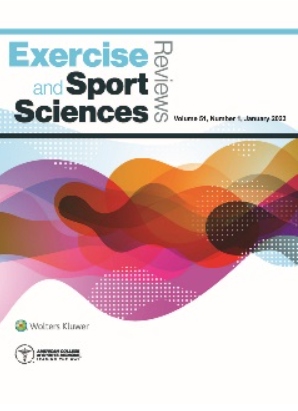Low Response to Aerobic Training in Metabolic Disease: Role of Skeletal Muscle.
IF 4.7
2区 医学
Q1 PHYSIOLOGY
Exercise and Sport Sciences Reviews
Pub Date : 2024-04-01
Epub Date: 2023-12-17
DOI:10.1249/JES.0000000000000331
引用次数: 0
Abstract
Aerobic exercise is established to increase cardiorespiratory fitness (CRF), which is linked to reduced morbidity and mortality. However, people with metabolic diseases such as type 1 and type 2 diabetes may be more likely to display blunted improvements in CRF with training. Here, we present evidence supporting the hypothesis that altered skeletal muscle signaling and remodeling may contribute to low CRF with metabolic disease.
代谢性疾病患者对有氧训练的低反应:骨骼肌的作用。
摘要:有氧运动可增强心肺功能(CRF),这与降低发病率和死亡率有关。然而,患有代谢性疾病(如 1 型和 2 型糖尿病)的人可能更容易在训练中表现出心肺功能改善不明显。在此,我们提出了支持这一假设的证据,即骨骼肌信号传导和重塑的改变可能是导致代谢性疾病患者CRF低下的原因。
本文章由计算机程序翻译,如有差异,请以英文原文为准。
求助全文
约1分钟内获得全文
求助全文
来源期刊

Exercise and Sport Sciences Reviews
社会科学-生理学
CiteScore
10.70
自引率
1.80%
发文量
72
期刊介绍:
Exercise and Sport Sciences Reviews made the transition from an annual hardcover series book to a quarterly journal in January 2000. The mission of this American College of Sports Medicine publication is to provide premier quarterly reviews of the most contemporary scientific, medical, and research-based topics emerging in the field of sports medicine and exercise science. The publication strives to provide the most relevant, topical information to students, professors, clinicians, scientists, and professionals for practical and research applications.
 求助内容:
求助内容: 应助结果提醒方式:
应助结果提醒方式:


